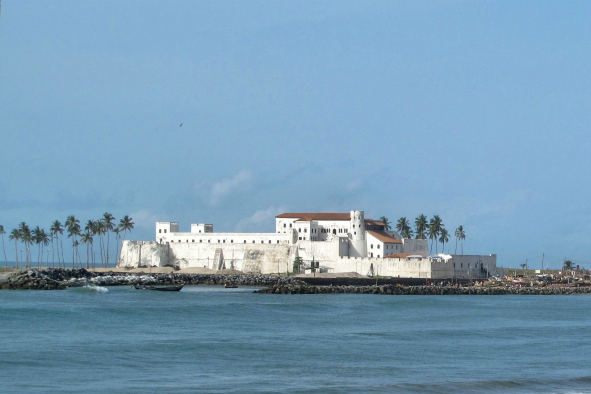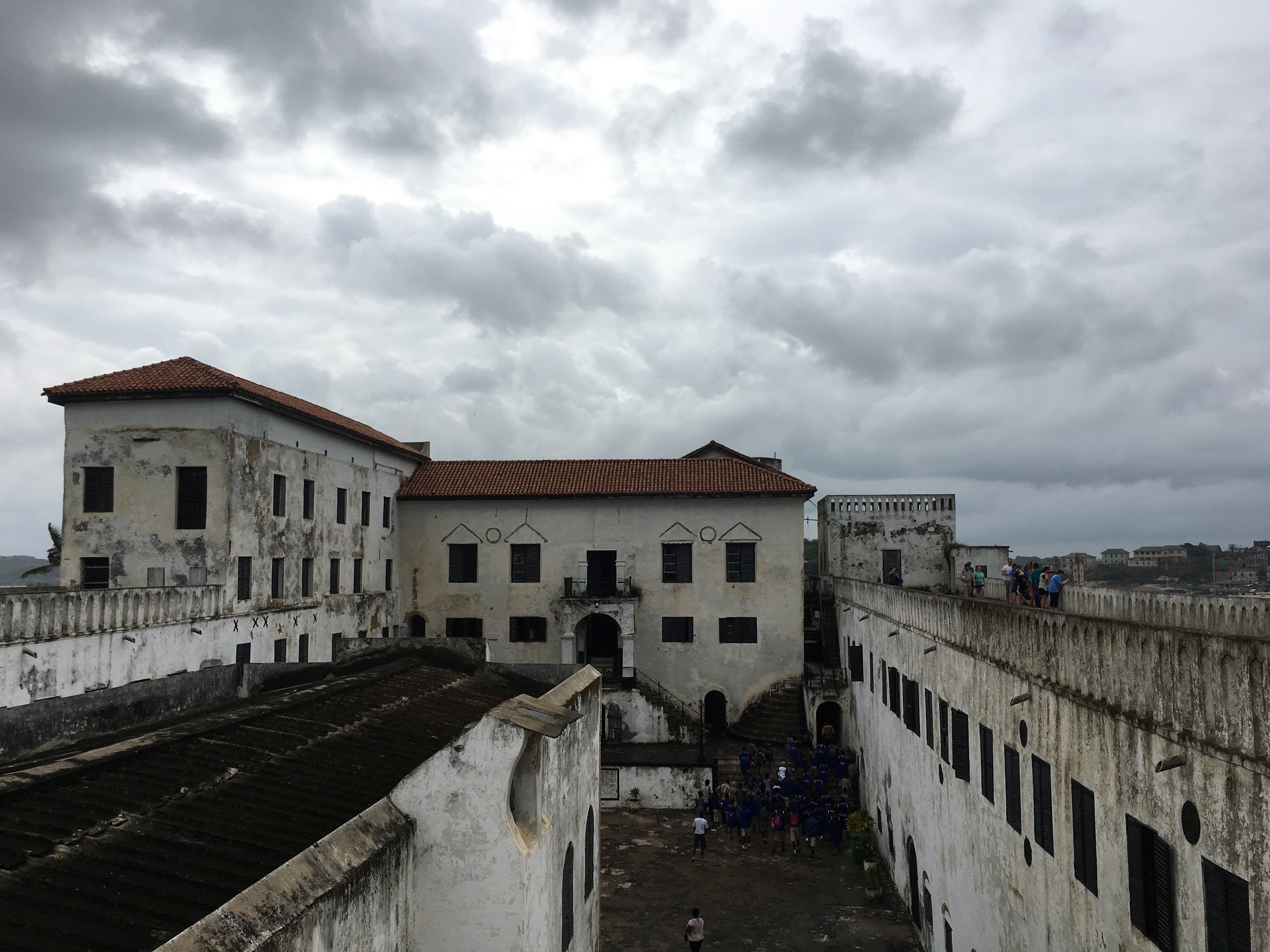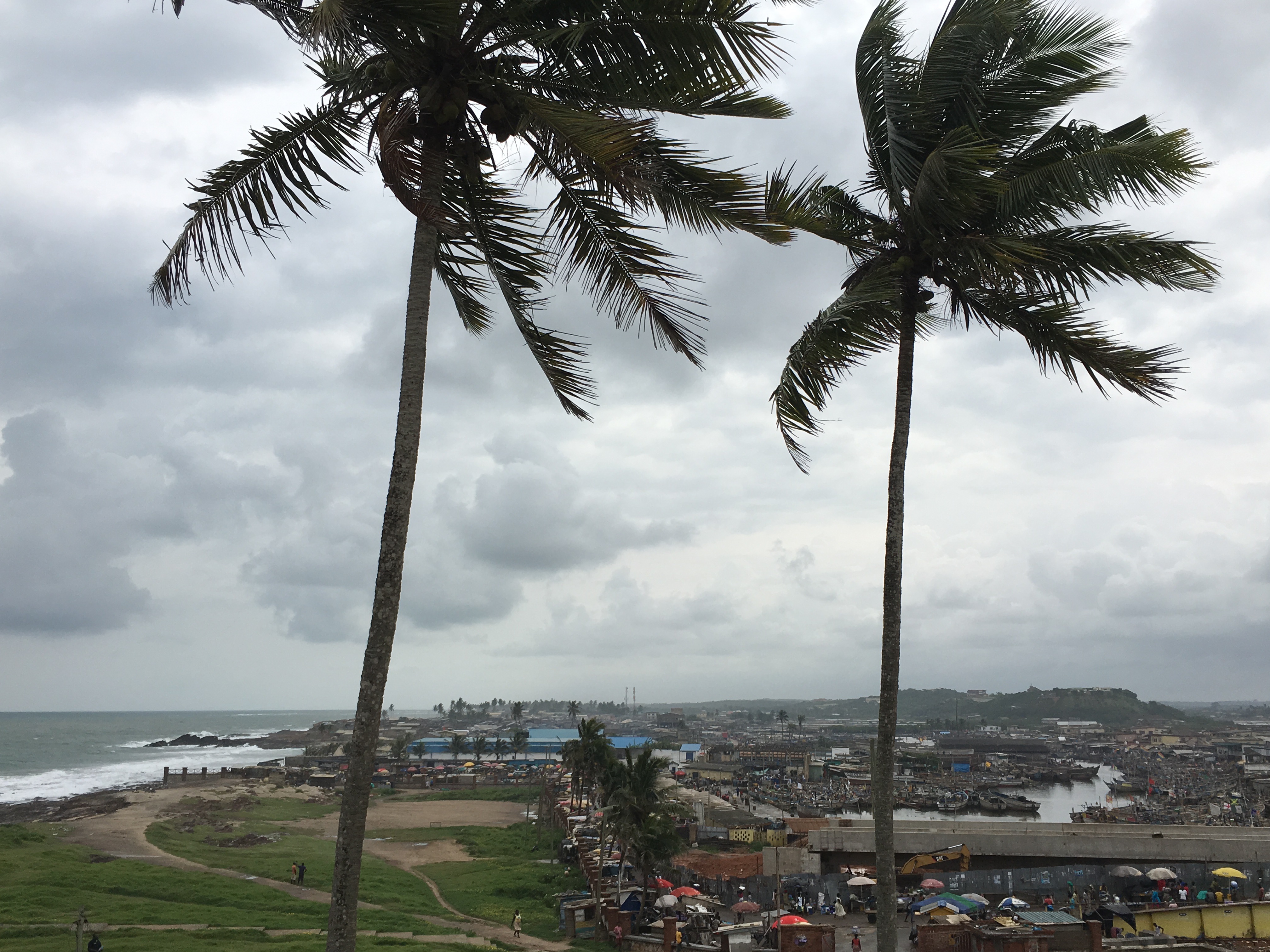Touring most castles conjures up images of a decadent past, but at Elmina Castle, in Ghana, you encounter a more sordid story; it was the first European slave-trading post in Sub-Saharan Africa. The castle is worth a tour, both in memory of those who passed through its gates, and as a reminder against future atrocities.

Elmina Castle, Ghana (Photo: Francisco Angola, Creative Commons, Flickr)
One of the more imposing yet beautiful aspects of Ghana is the country’s coast. Ghana’s southern edge, from Accra to its border with Cote d’Ivoire, touches the ocean. Ghanaian beaches, while picturesque, are not meant for swimming. Waves buffet the shore, and there’s a strong undertow. However, the views out over the water are magnificent, especially from Elmina Castle.
From the upper floors of the ancient stone building, I can see a beachside studded with gently waving palms, the bright sea crashing against the shore. Looking out over all that beauty, it’s strange to think that this was the last view thousands of slaves had before they were loaded onto ships and sent to the Americas.
The first European slave-trading post in Sub-Saharan Africa, Elmina was built in 1482 by the Portuguese. Although the castle initially served a hub for the gold trade (hence its title ‘Elmina’ – the mine) by 1500 the castle had also become a base for the slave trade. People captured from the interior of the continent were held prisoner in the castle, and guarded by soldiers before being transported to ships bound for the colonies. In 1637 the Dutch took over the fort, and continued to use it as part of their own slave trade operations until 1814, when the practice was abolished by the Netherlands.

Above and below (Photo: Francisco Angola, Creative Commons, Flickr)
My tour of Elmina begins in the courtyard of the castle. From here the grandeur of the building is plain. Tall walls rise up on all sides. Ancient staircases wend in and out. Intricate, wrought-iron railings wrap around balconies, and wooden shutters still cover the windows. The most prominent structure visible in the courtyard, though, is the church. It is a large building, placed almost central in the courtyard. About 500 meters away from the church are the male slave dungeons – the first stop from on my tour.
Anyone who has been to school knows about slavery. I discover here that there’s a difference, though, between reading about atrocities in a book, and actually seeing the place where some of them occurred.
We walk through the male dungeons first. Both the male and female dungeons are long rooms with shallow arched ceilings. Everything is stone. The only light comes through narrow windows on one side of the room, and it’s so dark that the guide has to turn on a flashlight to allow my group to walk safely, even in broad daylight. The floors are rough, slightly muddied, with eddies of water running through them. This, the guide explains, was where the captives would sleep. The rooms were so crowded, and had so little ventilation, that it was often difficult for the inhabitants to breathe. You can hear murmurs of disbelief from the group every time the guide lists a fact like this, and there are quite a few of them.

A tour of the castle (Photo: Francisco Angola, Creative Commons, Flickr)
From the dungeons, our tour goes through an open courtyard, where prisoners who misbehaved were chained to sit out in the heat, in the rain. We pass by the ‘Door of No Return’ a small tunnel that leads through the walls of the castle and out to the boats. Then we proceed back to the courtyard, standing in front of a heavy black door with a skull and cross bones carved over it. Here, prisoners deemed particularly rebellious were locked in a small room without food or water, to die of dehydration.
This is only the first floor. We go upstairs, to the area where the members of the military lived. Traveling from the ground floor to the upstairs, rough stone gives way to softer wood. Here are spacious, well-lit rooms where soldiers ate, slept and socialized. In contrast to the floor below, the upper levels of the castle are light, airy, pleasant. The room where the Commander would sleep is large, with many windows, and a 180 degree view of those astounding coastal views.

Coastal views from Elmina (Photo: Francisco Angola, Creative Commons, Flickr)
This is what is most profound about touring Elmina for me. It’s not so much that human beings were kept in absolutely abysmal conditions. It’s that one floor above them, interacting with them every day, for months, were other people. People who went to church, who ate their meals, who slept in comfortable quarters, night after night.
While walking through the ground floor of Elmina, it’s easy to imagine yourself as a captive, a slave. It’s easy to think about what it would have been like to sleep on hard floors, to be cold, to be hungry, to be desperate for fresh air. Touring the upper floors of the castle though, it’s equally easy to imagine yourself as a guard, and to wonder what you, if placed in that situation, would have done.
My tour ends where it began, in front of a stone plaque dedicating the castle.
“In everlasting memory of the anguish of our ancestors,” it reads. “May those who died rest in peace. May those who return find their roots. May humanity never again perpetrate such injustice against humanity. We the living vow to uphold this.”
The plaque reminds me that my visit to Elmina, and places like it, isn’t entirely about recollecting the past, it’s also about making sure it is never repeated. Some things, after all, we visit because we want to remember; some things though, we visit so as to never forget.